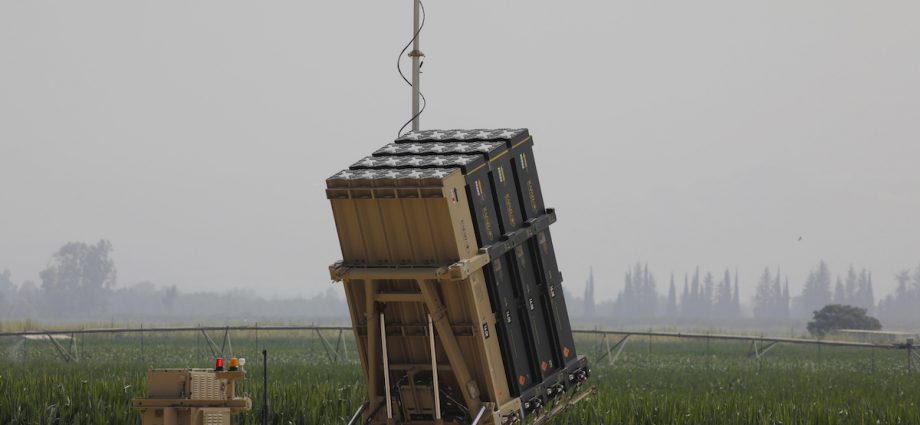If there is one thing clear as war breaks out in southern Israel and the Gaza strip, it is that Israel’s Iron Dome missile defense system works and works in spectacular fashion. Faced with the launch of over 70 missiles, many of them simultaneously, the Iron Dome interceptors picked them off quickly, one by one.
Iron Dome and many of Israel’s other missile defense systems, particularly Arrow, owe a lot to Dr. Uzi Rubin. Rubin served as the first head of Israel’s Ballistic Missile Defense Organization from 1991 to 1999.
This was the formative period when Israel modernized its air defenses as missile threats grew. Recall that it was 1990 to 1991 that the first Iraq War broke out.
Iraq fired 42 Scud missiles into Israel from January 17-23 February 1991. While few of them hit their targets, the reality of a missile threat to Israel became clear. US-supplied air defense systems, especially the Patriot, were not effective in stopping the Scud attacks.
While the US started working on improvements to Patriot – a process that is ongoing – Israel mostly had to strike out on its own to confront threats coming from Syria and Iran as well as terrorist organizations Hamas and Islamic Jihad in Gaza and Hezbollah in Lebanon and Syria.
As Iran moves ahead on developing nuclear weapons that will eventually be part of their missile arsenal, the challenge has become existential for Israel and the region.
Rubin led the missile defense effort in Israel that has led to Iron Dome, David’s Sling, Arrow, Arrow 2, Arrow 3 and now Arrow 4, the latter thought to be an exoatmospheric long-range interceptor.
Rubin remains active as an advisor to Israel’s defense organizations and as an analyst at the Begin-Sadat Center for Strategic Studies, where he publishes and lectures extensively on the evolving regional and global threat.
Germany is acquiring Israel’s Arrow 3 for its national defense missile shield.
Iron Dome is optimized against short-range rockets and missiles, as well as cruise missiles. It was tested in June at the US White Sands Missile Range in New Mexico by the US Army together with Israel’s Missile Defense Organization. The test also demonstrated that Iron Dome operated effectively “within the US AMD [air and missile defense] architecture.”
For the past two years, after two Iron Dome systems were purchased by the Army, US Army officials argued that the system did not work with US Army systems including radars and communications. The White Sands test, where Iron Dome destroyed all fired targets, demonstrated that the system can be readily integrated with US components.
The US Army is fixated on the “NIH”, or Not Invented Here, syndrome. The US Army has killed all competitors to Patriot, including by rejecting any role in the US for the US-European MEADS (Medium Extended Air Defense System), essentially walking away from a previously agreed consortium and a US$2 billion investment.
Meanwhile, the US Marine Corps carried out their own Iron Dome tests at White Sands. According to a report by Seth Frantzman, the test “involved the Marine Corps’ Medium-Range Intercept Capability (MRIC) prototype hitting several simultaneously-launched cruise missile representative targets coming from different directions and angles at White Sands Missile Range in New Mexico.”

As a result of the testing, the US Marines decided to invest in the technology. The Marines were especially interested in the Iron Dome Interceptor’s missile known as Tamir.
But an emerging deal includes other elements of the Iron Dome system that can be integrated with US Marine’s fielded components including the AN/TPS-80 ground/air task-oriented radar system and the G/ATOR Common Aviation Command and Control System.
Related Israeli air defense systems and components also are gaining traction in the US. Israel’s deployed “Stunner” missile, built by Rafael in Israel and Raytheon in the US, has been rebadged as SkyCeptor. The hit-to-kill missile, which features advanced electro-optical and infrared sensors and also an AESA radar onboard, can now be used on Patriot launchers.
Romania is now producing the missile under license for its Patriot air defense system. Likewise, Poland will also be manufacturing SkyCeptor missiles for its Patriots. Raytheon is offering Poland a booster rocket to significantly extend the missile’s range.
SkyCeptor has a more advanced sensor package compared to most Patriot missiles, significantly at one-fourth the cost.
It is very likely that a number of Israeli air defense systems, or upgrades to existing air defenses, will find customers among the Gulf States, possibly including Saudi Arabia. The UAE and Saudi Arabia have bought air defenses from a number of countries including the US (Patriot and THAAD), France (Crotale), and Switzerland (Oerlikon).
The UAE has procured the South Korean system known as KM-SAM Cheongong II (Iron Hawk), which was developed in partnership with Russia’s Almaz-Antey (officially JSC Concern VKO), its premier air defense system developer, and Fakel (P D Grushin Machine-building Design Bureau). Its interceptor missile is a copy of Russia’s 9M96 which is used on Russia’s Triumf S-400 air defense system.
Israel has a growing defense relationship with Gulf countries thanks to the Abraham Accords in the case of the UAE and a parallel warming of ties between Saudi Arabia and Israel.
Follow Stephen Bryen on Twitter at @stevebryen

